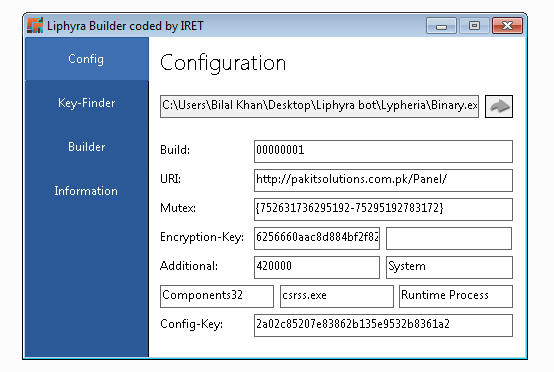Liphyra Bot 2025

The Liphyra botnet 2025 represents a significant cybersecurity threat, designed to exploit vulnerabilities in networked devices to carry out malicious activities. This article explores the origins, capabilities, and potential impacts of the Liphyra botnet, shedding light on its role in the evolving landscape of cybercrime.
Origins and Development
The Liphyra botnet emerged around 2014, with references to its builder and source code appearing on hacking forums. Built on the Atrax Panel command-and-control (C&C) infrastructure, it was marketed as a versatile tool for cybercriminals. Its development included plugins and tutorials, making it accessible even to less experienced attackers. The botnet’s name coincidentally aligns with Liphyra, a genus of predatory butterflies, though this appears to be an unrelated naming choice.
Technical Capabilities
Liphyra is a multi-functional botnet with a range of malicious capabilities, including:
Password Grabbing: The botnet targets credentials from browsers such as Chrome, Firefox, Internet Explorer, Opera, and Safari, as well as software like Filezilla and Pidgin.
DDoS Attacks: It supports various distributed denial-of-service (DDoS) techniques, including Slowloris, HTTP-Flood, SYN-Flood, and UDP-Flood, enabling attackers to overwhelm target servers.
Reverse Socks5 Proxy: The RevSocks5 feature allows attackers to route traffic through compromised devices, masking their activities.
Steam Plugin: A specialized plugin targets Steam accounts, potentially for credential theft or fraudulent activities.
Data Exfiltration: Liphyra can extract sensitive data from infected systems, increasing its utility for espionage or financial gain.
These features make Liphyra a flexible tool for a range of cyberattacks, from data theft to service disruption.

Deployment and Spread
Liphyra is typically distributed through cracked software, malicious downloads, or phishing campaigns. Files like “Liphyra_bot.rar” have been flagged as potential malware carriers, often hosted on file-sharing platforms. Its builder and tutorials, widely shared on underground forums, lower the barrier to entry, allowing even novice attackers to configure and deploy the botnet.
Once a device is infected, it connects to the C&C server, enabling the attacker to issue commands remotely. The botnet’s ability to infect a variety of systems, including those running virtual machines, has been noted in analyses, though detection rates vary depending on the environment.
Detection Challenges
Detecting Liphyra poses challenges due to its relatively low sample representation in datasets like the ISOT HTTP Botnet Dataset. Machine learning models, such as Random Forest and Decision Tree, have shown high precision but low recall in identifying Liphyra, while others, like Naive Bayes and SVM, struggle due to limited training data. This scarcity of samples complicates the development of robust detection tools, allowing Liphyra to evade some security measures.
Impact and Risks
The Liphyra botnet’s capabilities make it a potent threat to individuals, businesses, and infrastructure. Its password-grabbing functionality can lead to identity theft or unauthorized access to sensitive systems. DDoS attacks orchestrated by Liphyra can disrupt online services, causing financial losses and reputational damage. Additionally, its ability to function as a proxy network facilitates other illegal activities, such as money laundering or anonymous cyberattacks.
The botnet’s presence in datasets and its analysis by security researchers highlight its persistence in the threat landscape. Its adaptability and the availability of its source code increase the likelihood of variants emerging, further complicating mitigation efforts.
Mitigation Strategies
To combat the Liphyra botnet, organizations and individuals should adopt the following measures:
Endpoint Security: Deploy robust antivirus and anti-malware solutions to detect and remove botnet infections.
Network Monitoring: Use intrusion detection systems to identify unusual traffic patterns indicative of botnet activity.
User Education: Train users to avoid downloading unverified software or clicking suspicious links, common infection vectors for Liphyra.
Patch Management: Regularly update software and operating systems to close vulnerabilities exploited by botnets.
Advanced Analytics: Leverage machine learning-based tools to improve detection of low-sample botnets like Liphyra, incorporating techniques like Grid Search for optimization.
RevSocks5
PwdGrabber
GRABS FOLLOWING BROWSERS
Chrome
Filezilla
Firefox
Internet Explorer
Opera
Pidgin
Safari
DDoS:
Slowloris
HTTP-Flood
SYN-Flood
UDP-Flood
Steam plugin
